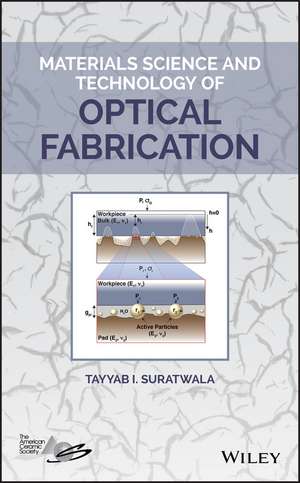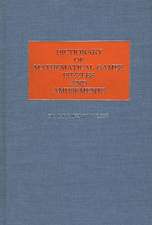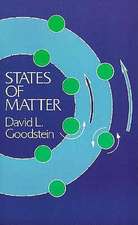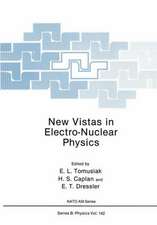Materials Science and Technology of Optical Fabrication
Autor T Suratwalaen Limba Engleză Hardback – 29 noi 2018
Manufacturing next generation optics has been, and will continue to be, an enabler for enhancing the performance of advanced laser, imaging, and spectroscopy systems. This book reexamines the age-old field of optical fabrication from a materials-science perspective, specifically the multiple, complex interactions between the workpiece (optic), slurry, and lap. It also describes novel characterization and fabrication techniques to improve and better understand the optical fabrication process, ultimately leading to higher quality optics with higher yield.
Materials Science and Technology of Optical Fabrication is divided into two major parts. The first part describes the phenomena and corresponding process parameters affecting both the grinding and polishing processes during optical fabrication. It then relates them to the critical resulting properties of the optic (surface quality, surface figure, surface roughness, and material removal rate). The second part of the book covers a number of related topics including: developed forensic tools used to increase yield of optics with respect to surface quality (scratch/dig) and fracture loss; novel characterization and fabrication techniques used to understand/quantify the fundamental phenomena described in the first part of the book; novel and recent optical fabrication processes and their connection with the fundamental interactions; and finally, special techniques utilized to fabricate optics with high laser damage resistance.
- Focuses on the fundamentals of grinding and polishing, from a materials science viewpoint, by studying the chemical and mechanical interactions/phenomena over many scale lengths between the workpiece, slurry, and lap
- Explains how these phenomena affect the major characteristics of the optic workpiece--namely surface figure, surface quality, surface roughness, and material removal rate
- Describes methods to improve the major characteristics of the workpiece as well as improve process yield, such as through fractography and scratch forensics
- Covers novel characterization and fabrication techniques
Preț: 874.79 lei
Preț vechi: 961.31 lei
-9% Nou
Puncte Express: 1312
Preț estimativ în valută:
167.51€ • 172.60$ • 140.57£
167.51€ • 172.60$ • 140.57£
Carte tipărită la comandă
Livrare economică 21 februarie-07 martie
Preluare comenzi: 021 569.72.76
Specificații
ISBN-13: 9781119423683
ISBN-10: 1119423686
Pagini: 416
Dimensiuni: 152 x 229 x 26 mm
Greutate: 0.73 kg
Editura: Wiley
Locul publicării:Hoboken, United States
ISBN-10: 1119423686
Pagini: 416
Dimensiuni: 152 x 229 x 26 mm
Greutate: 0.73 kg
Editura: Wiley
Locul publicării:Hoboken, United States
Public țintă
Process engineers, Fabrication Engineers, Manufacturing Engineers, Optical Scientists, and Opticians in the optical fabrication industryInstructors and Students for Material Science Courses and Applied Optics/Photonics courses
Engineers at Opto–mechanical and Optoelectronic Companies, such as Edmund Optics, Thorlabs, Corning, Newport.
Notă biografică
TAYYAB I. SURATWALA, PhD, is Program Director for Optics and Materials Science & Technology (OMST) in the NIF & Photon Science Directorate at Lawrence Livermore National Laboratory. He directs and oversees OMST operations, which include the optics supply for laser programs in the directorate, the NIF optics recycle loop, and the accompanying materials science and technology (including laser damage science & mitigation and optical fabrication).

























